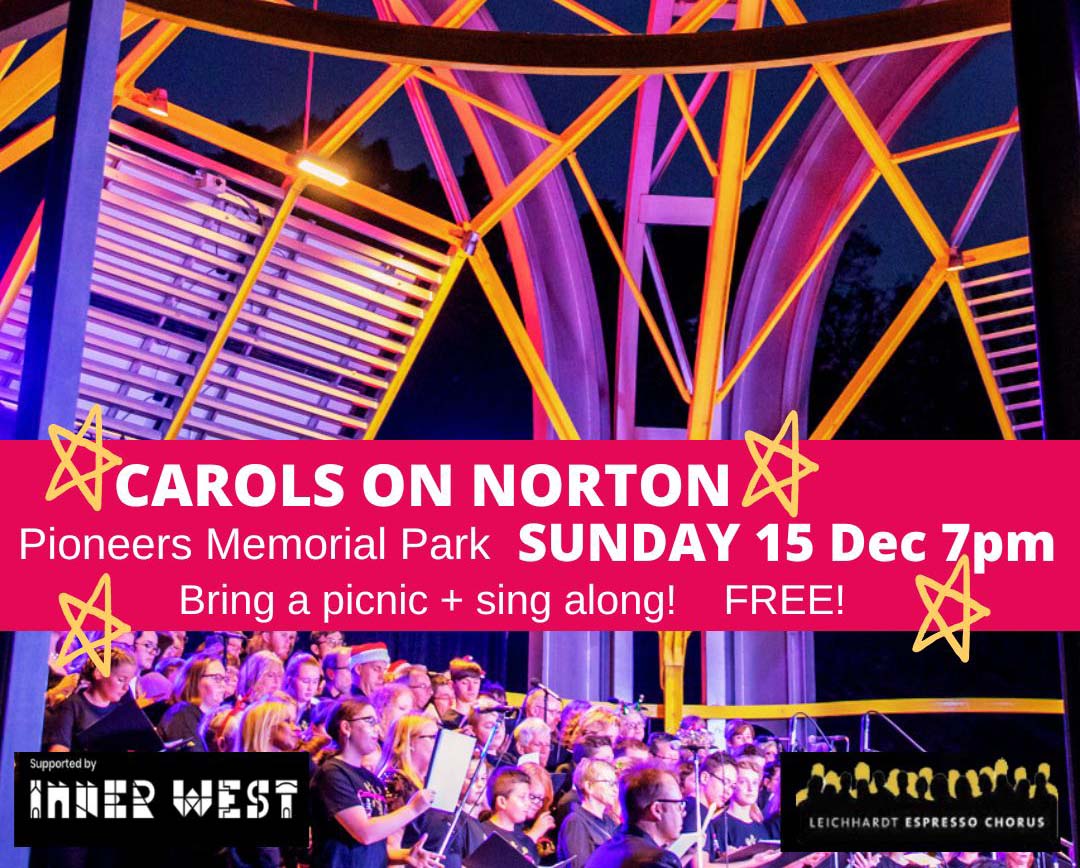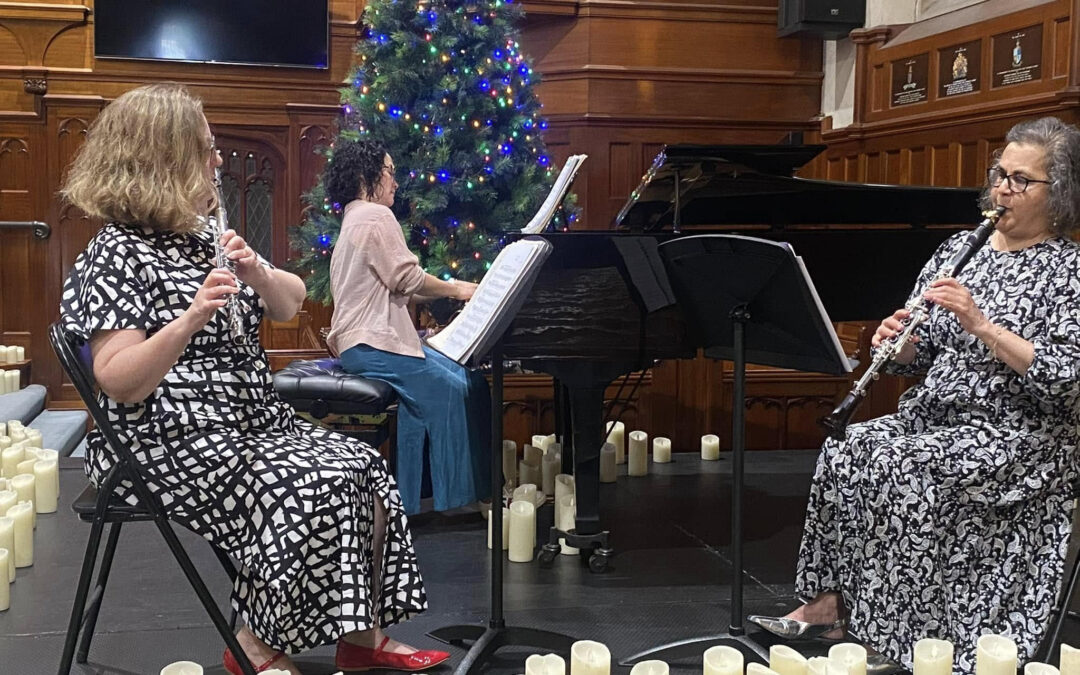Sydney Chamber Choir & Camerata Antica: Splendour & Mystery
25 March 2023, Verbruggen Hall, Sydney
The restrained conducting by Sam Allchurch of the Sydney Chamber Choir showed an intense musical focus which was reciprocated by the choir and instrumentalists. The SATB wind consort was made up of Renaissance instruments, a cornetto, alto, tenor and bass sacbutts and a positive organ. The program was based on repertoire from the late Renaissance/early Baroque, as well as modern compositions, all for double choirs or for a large number of vocal parts. So a sumptuous texture was the order of the day.

Choral works by Giovanni Gabrielli bookended the concert. The initial ten vocal line Jubilate Deo, omnis terra with its spread of voices throughout the three octave range would have filled the resonant acoustic of San Marco in Venice with a blanket of sound. While the acoustics of the Verbruggen Hall have nothing like that duration of reverberation, they do, by contrast, lend a transparency to the sound, making all the parts clearly distinguishable. This glorious work alternates the flowing 16th-Century counterpoint with joyful triple time homophonic “jubilato”s. The early wind instruments have a much gentler sound than their modern day equivalents and hence blended with the voices to enrich the texture further. Notwithstanding San Marco, the sound was indeed sumptuous.
John Tavener’s A Hymn to the Mother of God is a work of Orthodox reverence to Mary. What is particularly interesting though is its structure. There are two choirs of 6 parts each and they sing the same music but several beats displaced; a bit like a rapid-fire canon. Canons are usually arranged so that there is a repeating harmonic structure to ensure harmonic integrity. Tavener however allows the two choirs to clash against each other with increasing dissonance. The tension gradually resolves as the piece nears its end. The canonic treatment is a little like Benjamin Britten’s “This little babe” from the Ceremony of Carols. Anyway the Tavener is a fascinating work.
Chronologically speaking Heinrich Schütz is a composer of the early Baroque, but his music, and particularly this his final work, the German Magnificat, is in many ways more like a Renaissance piece. As a young man Schütz studied under Gabrielli in Italy for 3 years and also revisited Venice during Monteverdi’s tenure. Although living in Dresden and although the work is in German and although it is rather homophonic than contrapuntal, one could easily imagine its sound in San Marco. Joyful triple time phrases are tossed between opposing choirs. And the instrumentation make it seem earlier than baroque. We get to compare this setting with a Magnificat by Gabrielli himself at the end of this program.
I always find it rather intriguing that the Magnificat, the annunciation canticle that Mary offers up to God upon learning that she is pregnant, is almost universally set as a choral work, and often grand at that, rather than a solo work. One would think a single youthful female voice is called for rather than duelling choirs! Anyway it has inspired many wonderful musical settings, so – all to the good!
Going from the beginning of Christ’s life, the work Christ the King by NZ/Australian composer Clare Maclean uses text which imagines how he might have prayed facing his own death. This complex ten voice work starts with a single Gregorian-like melody, perhaps reminiscent of Hildegard. The choral texture builds on this to a lush but sad climax and gradually returns to a profound unison.
The centrepiece of this sacred music program was the masterwork Mass for Double Choir by the 20th-century Swiss composer Frank Martin. The work is curious in number of ways. It was finished in 1926 but it languished and did not receive its first performance until 1963. It is a setting of the Ordinary of the Catholic latin mass written by a Calvinist; there are precedents for this of course; for example, the staunch Lutheran JS Bach wrote several latin masses. It is scored for the rather grand resources of a double choir, yet is an introspective work. The two choirs are used mainly to provide a rich texture rather than for the antiphonal effects we see elsewhere in this program. It is also a remarkably tonal work; unusual for a period in music when tonality was being pushed to its limits or abandoned all together. This all sets the work aside with a special place in the repertoire, but it does not diminish its beauty or depth of religious conviction. There are many moments of intense meaning here; the dancelike “Gratias agimus tibi” and the humble pleading of the “Agnus Dei”, the womb-like tranquility and magic of the “et incarnatus est”, the shrinking of the life force in the “passus et sepultus est” followed by the frenetic “et resurrexit” to name but a few. It was a privilege to hear this work, and so well performed.
Sydney composer Brooke Shelley has established a reputation for composing sacred music and the work presented here, Heavenly Father, seems to have already found a firm place in the repertoire of church choirs. It was inspired by Schütz’ requiem, known as the “Musikalisches Exequien” but works well free standing. It is for 8 parts, but not divided in multiple choirs and again the textures produce a reverential effect.
The program finished (the final Gabrielli bookend) with yet another choral Magnificat. Here the chorus is divided into 3 spatially separated choirs. Again, this composition could be easily imagined in San Marco with rich sounds emanating from all directions; it is really more about the spectacle of the sound than word painting.
I should say, the program notes were excellent; the right balance and depth of historical context and musicological observations to enhance the listening experience. Many thanks for putting in this effort.
The counterpoint in this program was always beautifully executed by the choir; accurate pitch, rhythm and blend of voices within and amongst vocal lines. And the sympathetic rise and fall of phrases allowed parts to emerge and fold back into the texture. I keep coming back to the word sumptuous…
Photo credit: Pedro Greig





























